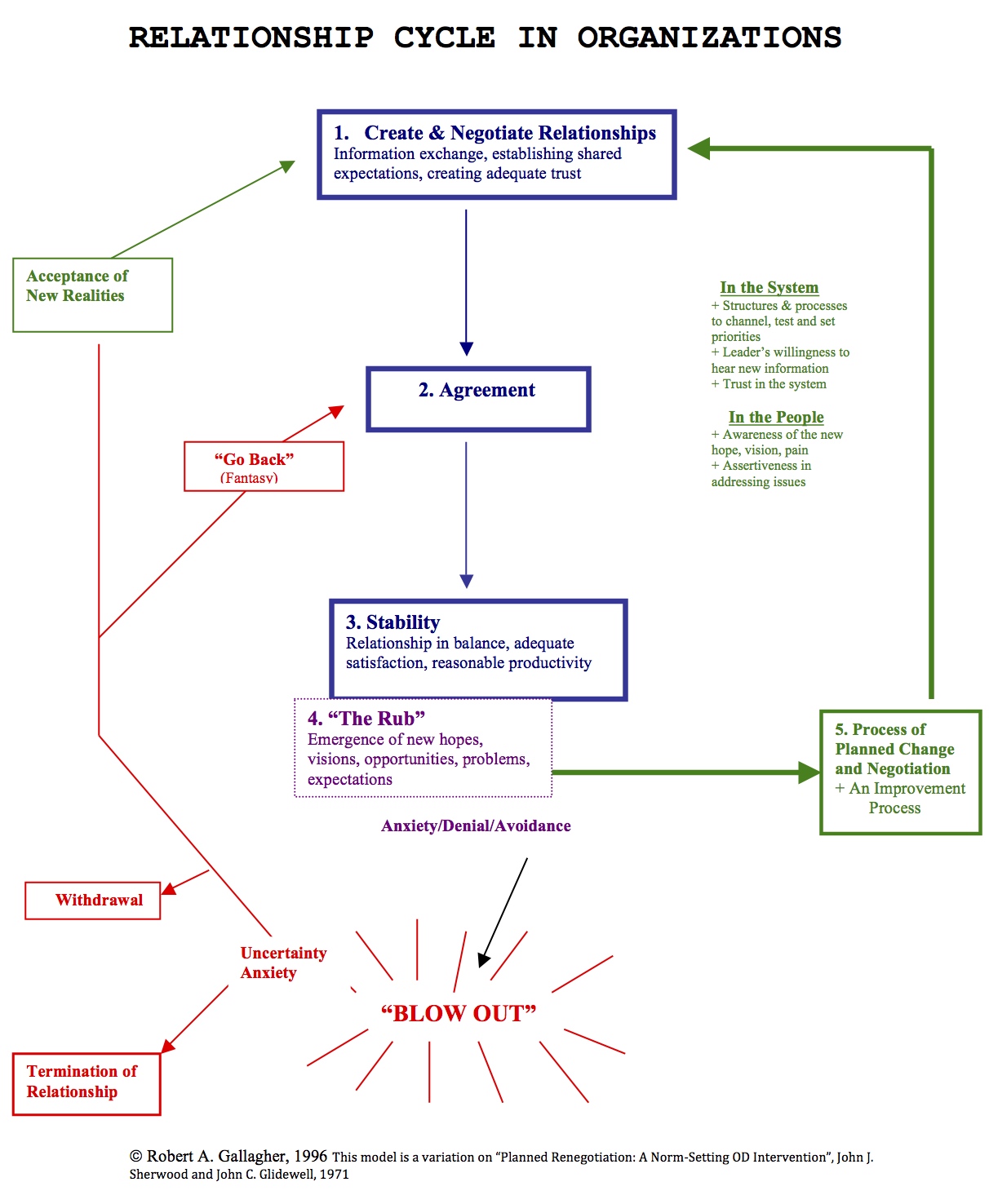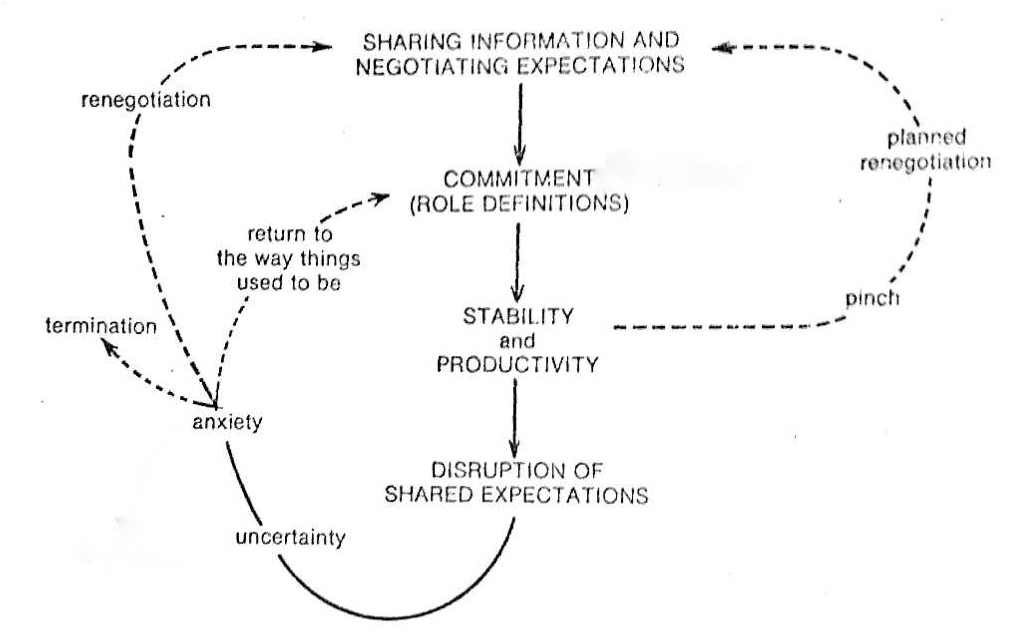The Relationship Cycle
 Tuesday, March 6, 2018 at 4:21PM
Tuesday, March 6, 2018 at 4:21PM One of the most useful models I've used over the years is the "Relationship Cycle." It's a way of understanding any relationship between or among people or between people and an organization they are part of.
The Relationship Cycle describes the normal and unavoidable sequence by which relationships are developed, expectations created, work begins, and then, in time, “rubs” crop up—bumps in the road, new opportunities not previously anticipated, personality clashes, new or revised processes that don’t quite work.
It helps when the parish has institutional, structured ways of checking in, channeling concerns, and moving forward as new hopes and concerns emerge. If the parish has such processes for the whole parish it will be easier for a working group or committee to use similar methods in adapting and revising its work over time.
Here's the current image I use for the model --

And here's a PDF of the image And a PDF of the image along with a presentation of the model
You are welcome to use them in your work. Such use is to maintain the PDF as it is offered and to be provided without charge. Below this posting you'll find additional related resources for the use of the model.
Here is the image of the "Planned Renegotiation Cycle" of Sherwood and Glidewell that I was inspired by; it was presented in an Organization Development Workshop in the early 70s -

Here's a 1998 version of their model on line - now called "Planned Renegotiation: the Pinch Model" If you do a search you'll find variations of the model in use for work with couples, family businesses, and conflict management. You'll notice how new elements and word use appears and are located in different places in the various images. All fairly normal stuff in the evolution of a model.
Over time I found myself continuing to work with the basic image (a type of cycle) but radically shifted the content. By 1996 I had developed a significant different model. Even at that I felt a need to acknowledge how the Sherwood-Glidewell model had influenced me. So, I had a statement on the handout.
Someplace along the line I discovered that the statement was getting omitted. I assume I got careless.
So, I hope if you make use of the Relationship Cycle you'll use the version in this posting that includes the acknowledgment.
Next? Michelle Heyne and I are working on a series of books on "shaping the parish." One of them will include models and theories we have found especially useful. We want to offer the Relationship Cycle with specific reference to the parish church.
rag+
Related Resources
A Reflection Process A Listening Parish